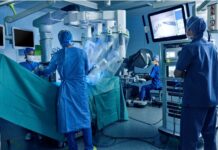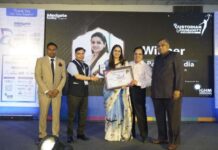New Delhi, May 28, 2019: Becoming the third leading cause of death, stroke is at the leading edge of severe, longstanding ailments. It is now a well-established knowledge that the current lifestyle patterns have only enhanced the scope of illnesses especially cardiovascular diseases following both diet and activity habits in all age groups. However, the predominance of stroke stays the highest (about 60%) in elderly patients.
The increased metabolic and cardiovascular issues along with other age-related problems, make older people more prone to strokes. For each consecutive decade after the age of 55 years, the rate of stroke doubles. It has been observed that almost three-quarters of all strokes occur in people above the 65-year age bracket. Medical and functional fallouts coupled with high BP, abnormally elevated cholesterol comorbid conditions, case fatality, altered metabolism, lower medication compliance, and increased drug interactions, etc. make elderly people, a higher-risk group for strokes. While onset stroke severity, pre-existing disability and atrial fibrillation (AF) are among the crucial age-related independent forecasters of diagnosis after stroke.
However, stroke incidences do increase rapidly with age, but it is still not an imminent result of aging. The advancement in medical sciences in the last few years have been massive and have significantly reduced stroke intensity as well as mortality, hence resulting in greater survival. This has allowed escalation of life expectancy in the older section of the society.
But to understand the demographics of stroke, it becomes important to understand stroke itself.
Is a stroke same as a heart attack?
No. A heart attack is when the blood flow to one of heart’s part is blocked and the heart muscle begins to die. But a stroke is more of a brain attack as in its case the blood and oxygen supply to the brain cuts off.
Recognizing a stroke
The signs of stroke are many a time mistaken for other conditions especially in the older generation as they are already dealing with multiple problems. They do not identify the new symptoms at the outset with acute stroke. They rather refer them to other illnesses like arthritis, weakness, headaches, or fatigue) and often fail to take immediate action. It is important to differentiate stroke from other conditions that have similar symptoms such as fits, diabetic low glucose disorders, brain tumor, fainting spells, etc.
Recognizing stroke through the initial symptoms, availing emergency evaluation and treatments at the earliest, and taking part in extensive rehabilitation is imperative in determining stroke outcomes, more so in the elderly.
While the symptoms are many, the easiest and most important steps to remember while recognizing a stroke are:
F: Face drooping
A: Arm weakness
S: Speech difficulty
T: Time to call for medical assistance
Numbness, weakness specifically in the body parts of one side of the body, confusion, trouble in understanding, walking or in seeing, loss of balance, sudden dizziness, double vision/blurred vision and severe headache are some of the early warning signs of stroke.
The change in lifestyle is affecting everyone’s health. The older generation has grown up in completely different conditions when it comes to routine, environment or food habits. To add to that, the aging body which is already weak becomes home to multiple health irregularities. Irrespective of the age, it is crucial to make healthy choices be it about food or physical activity as these are not just something that is in our control but also something very significant in keeping the body away from multiple medical ailments.
Stroke risk factors
Risk factors and stroke incidences spike in the old age especially in those above and around the age of 75 years especially due to comorbidity. Some of these major, uncommon and inter-related risk factors that to avoid are:
High blood pressure: A sign of structural and physiological abnormalities of vascular function, increased blood pressure is an important factor in the long-term risk of stroke.
Cholesterol: Even though it is very common, elevated total cholesterol and reduced high-density lipoprotein levels incline older adults towards ischemic stroke, which is the most common stroke.
Diabetes: The increase in total body fat and visceral adiposity with age often comes with diabetes. Type 2 diabetes and obesity are both major factors for stroke.
Atrial Fibrillation (AF): The most common clinically relevant dysrhythmia in people below the age of 75 are strongly related to ischemic stroke. AF is also the most treatable cardiac forerunner of a stroke.
Treatment for Stroke
Any patient having symptoms of stroke must reach stroke equipped hospital within 4.5 hours. Injection to burst the clot (IV Thrombolysis) can be given patient only within 4.5 hrs of onset of symptoms in case of Ischemic Stroke. In selected patients intra-arterial thrombectomy can be done within 24 hours of onset of symptoms in hospitals where Interventional radiology facility is available.
That’s why it is very important to visit stroke equipped hospital at earliest because“Time is Brain “.
Small steps towards prevention
But stroke can be avoided; all it needs is some self-care. While there are many treatments that allow you to come out healthy after a stroke; small everyday habits of choosing a healthier lifestyle through can keep your body fit, healthy and away from a stroke. Following are crucial to avoid stroke especially in elderly people:
- Sufficient physical activity
- Consumption of nutritious food
- Controlling hypertension
- Resolving dyslipidemia
- Managing diabetes
- Ceasing smoking
- Anticoagulating AF,
- Maintaining blood pressure
Corporate Comm India(CCI NewsWire)





















